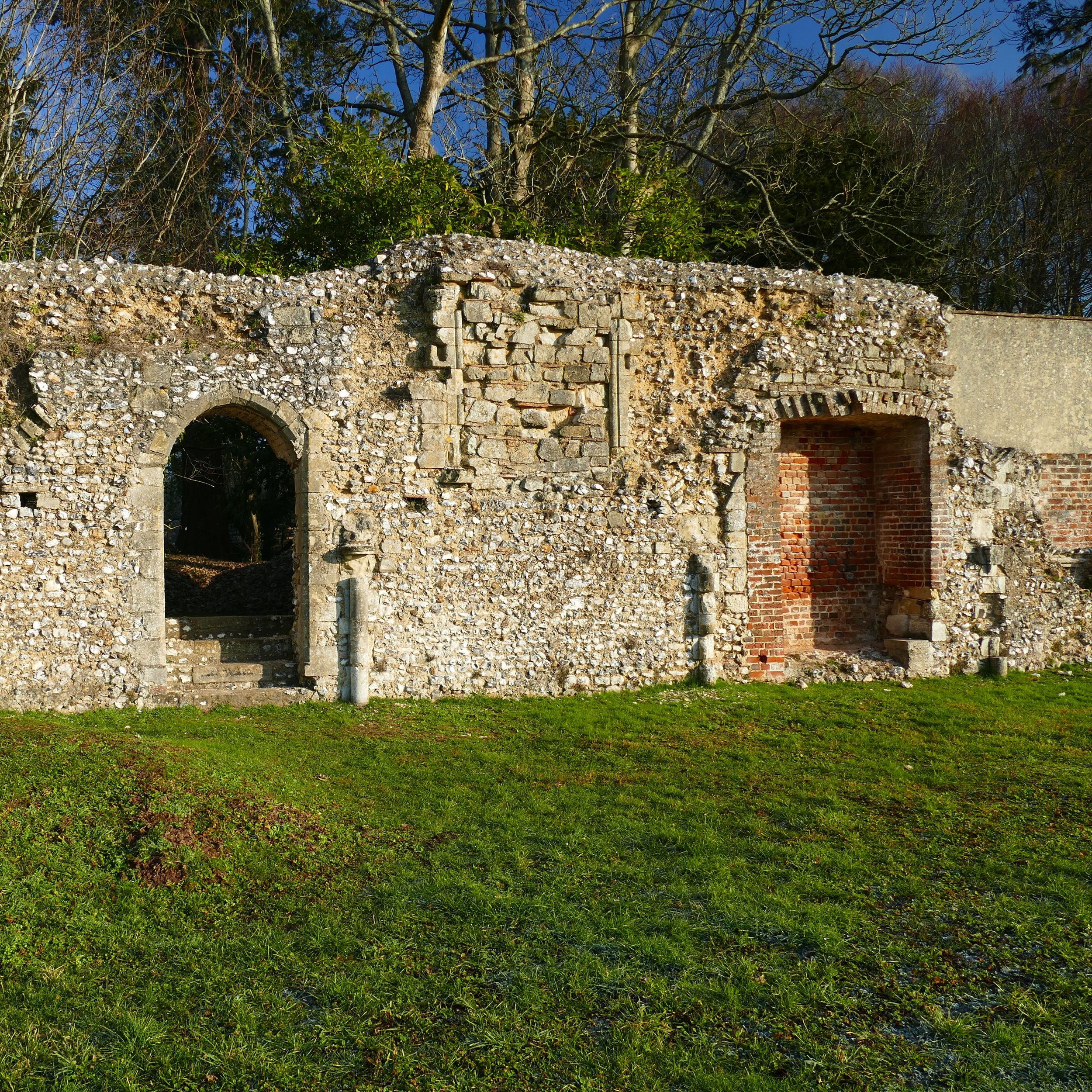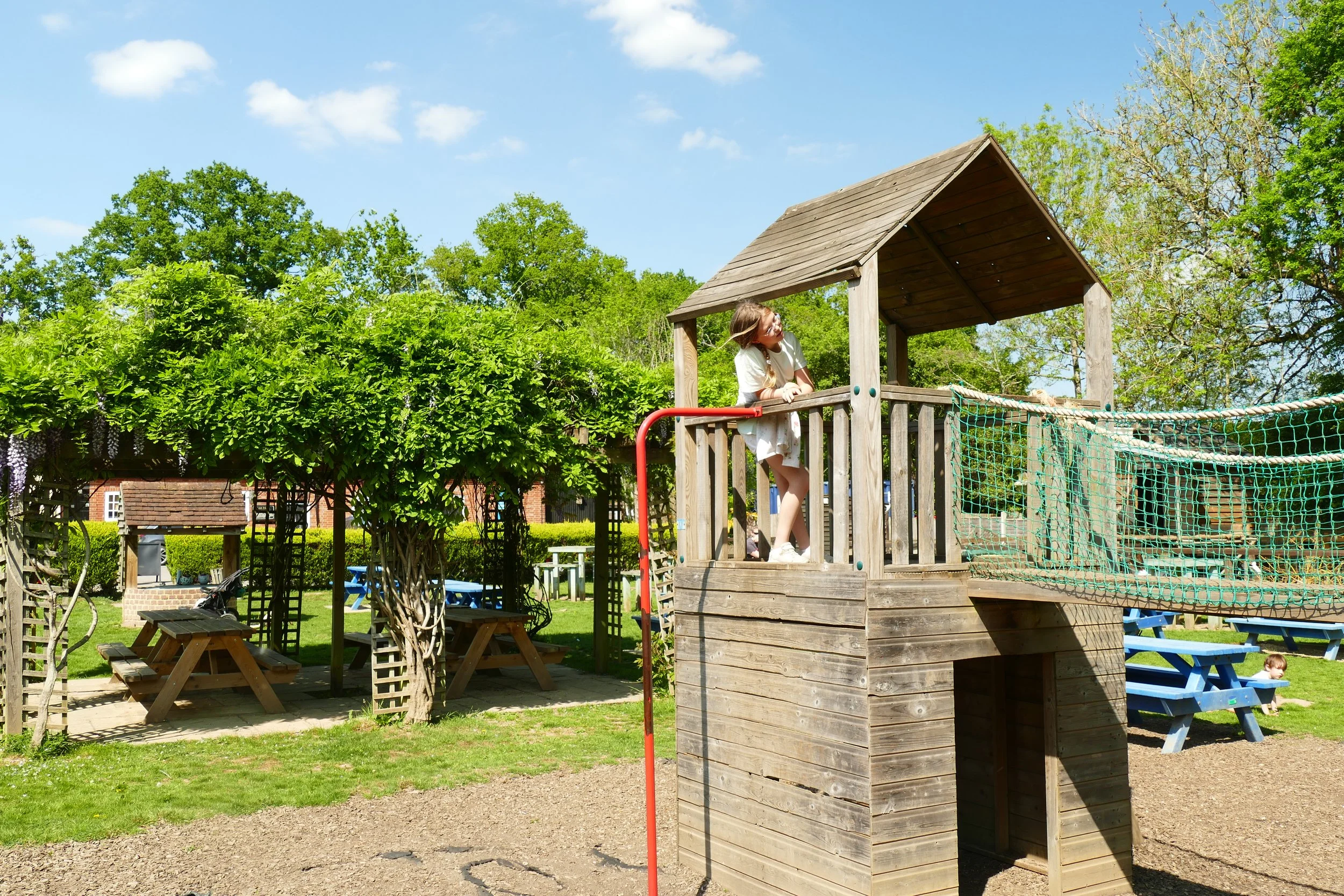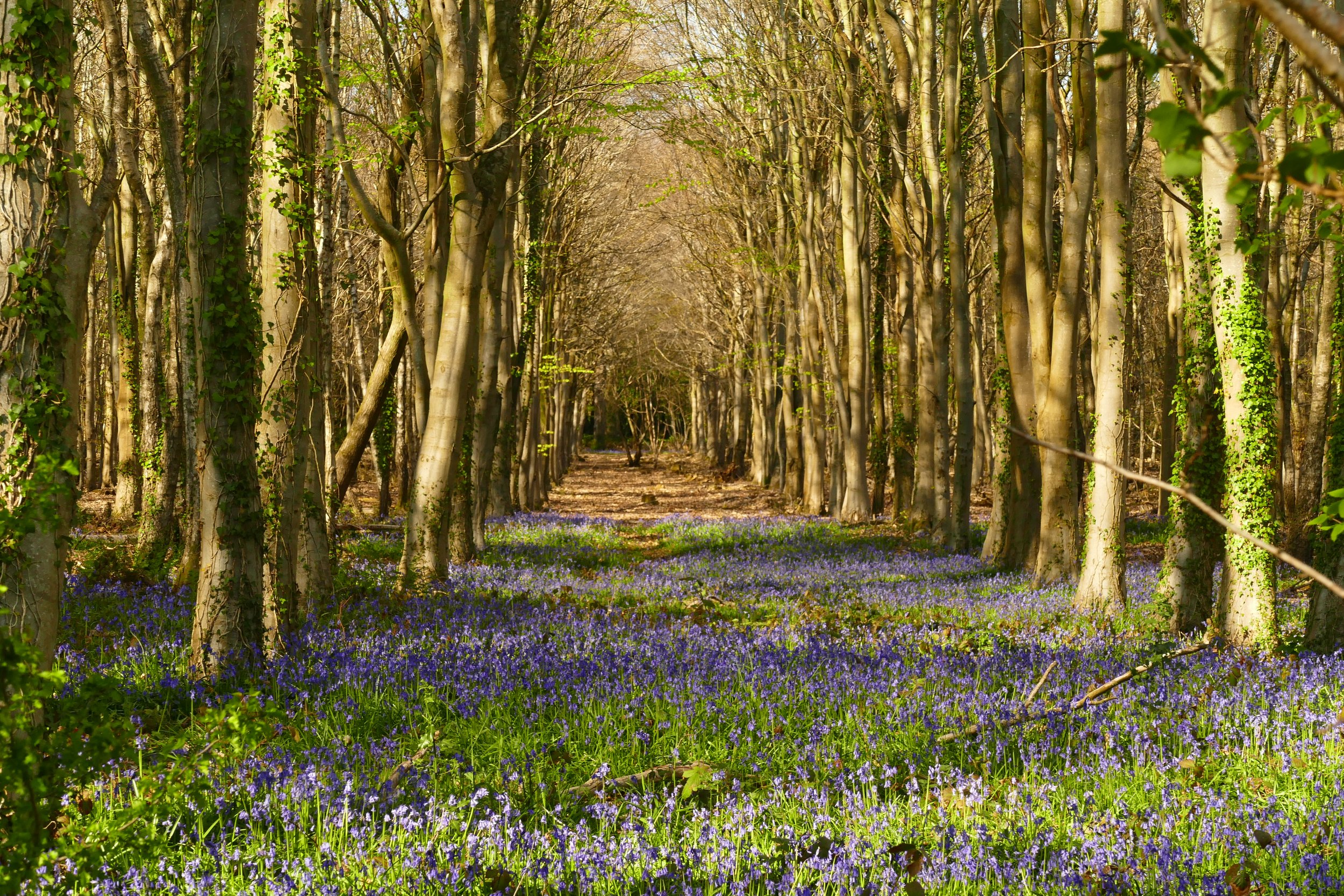Southwick
On this walk, children will enjoy the tea-room, play area and ruins of Southwick Priory
Southwick church on the pretty high street
The Basics
Time: 1 hour for the circular walk, plus about 5 minutes each way for Southwick Priory ruins
Distance: 4km, including diversion to the priory
Terrain: Mostly fields and bridlepaths with a small amount on pavements around the village. Some muddy sections in winter and rough steps to negotiate. The final section of the walk is on a grass verge beside a road.
Pushchair: Not on the circular walk, but you could take it to the priory ruins and around the village for a short, but still pleasant alternative
Dogs: Yes, but they will need to be on leads in the sheep field. We saw dogs in the tearoom.
Refreshments: Southwick Village Tearooms. with a large garden to the rear or two pubs, The Red Lion or The Golden Lion
Toilets: In the village stores if using the tearooms or shop
Parking: Free village car park to the rear of The Golden Lion, in front of the village hall (Postcode: PO17 6EB - W3W: strict/cake/oasis)
The small ruins of Southwick Priory
Start this walk in Southwick, an attractive village that has retained its historical charm, and then head out across the farmland of the wider estate. On your return you can visit the remains of Southwick Priory, now in the stewardship of English Heritage, and the village tea rooms, which come highly recommended.
The Route
Southwick Priory can be accessed as an add on at the start or finish of this walk. Cross Priory Road, which you used to enter the car park, and find the start of the access path directly on the opposite side of the road. It takes about five minutes to walk to the ruins, passing a large pond on your way. There is only really one wall section of the priory remaining, so there is not an awful lot to see, but it stands in a tranquil spot at the side of what is now a golf course.
To start the circular walk, leave the car park in the opposite direction to the priory, and with the back of the pub and the brewery to your left, head towards High Street. Turn right, soon passing St. James’ Church on your right and the village stores and tearooms on your left. At the junction, continue straight along High Street, passing The Red Lion on your right and walk until you come to a T-junction. Turn left here onto Back Lane.
Proceed down Back Lane for a short way until you spot the cottage with a flag pole and the start of a footpath on your right. The path will go over a little footbridge before climbing through a Christmas tree plantation. At the top of the field, cross into the next much larger field and follow the path to the opposite hedge. Here, you will meet a quiet country lane which you should cross and then climb the steps directly opposite to continue on the footpath.
Cross another field to a wooden footbridge over a stream (this is the first very muddy section - wellies advisable!). After the stream, continue across the field in the direction of the woodland opposite.
The path will enter the woodland and then soon broaden into a vehicle access track. Keep with this as it heads to the right and then look out for the next footpath marker on your right. This next path is fine in the winter, but I have a feeling that it could be the type of narrow path that becomes overgrown in the summer. If that is the case, you could continue up the original path for around 50 metres more and take the second path on your right instead, which will cross the sheep field (Walton Heath) parallel to the first path.
The first path will eventually lead you out into the same field mentioned above. Be warned that to do this, you will need to be nimble enough to step over a low electric fence (plastic safety covering at crossing point). Once in the sheep field, turn right and follow the worn path. Depending on how the farmer has chosen to enclose the sheep, you may need to use the plastic handles to open and close sections of the electric fence. When we walked, the fences were all open. Given the sheer number of ewes in this field, there could be a lot of lambs here in the spring.
The path will end at a large oak tree beside the road. Hop over the electric fence (plastic coating) at the gate and cross the country lane, once again taking the path directly opposite. This path will diagonally cross the top of a field to the farmhouse opposite. It was not a well worn path, but you should be able to make out the thin line leading away to your right. You will come to a five bar gate on the other side, which you should go through to find a farm access track on the other side. Turn left and the very shortly turn right and take the left fork which will be a bridlepath heading downwards away from you.
Follow the bridlepath as it gradually descends to a river crossing at the bottom (you will find another muddy section just before this). Cross the wooden footbridge and then take the right hand fork into a field. On the map, the path looks to take a diagonal route across this field, but we failed to see one. Instead, we went straight up the side of the field and then turned right at the corner to walk parallel to the road on the other side of the hedge.
Exit the field at the footpath finger post and then turn right along the Denmead to Southwick Road. This is quite a fast road, but there is a wide and high verge to keep you away from the traffic.
You will soon approach Southwick village once again. Look out for a junction with Castle Road on your left, just as you enter the village. Take this road into the housing estate and then turn right at the T-junction. Look out for house numbers 19 and 20 and and take the alleyway between them. Fork right where the alleyway splits and you will soon emerge at the play area.
When you are done at the park, you can take the metal gate in the fence on the other side of the field, just past the back of the village hall. Turn right to get back into the car park or turn left if you want to visit the priory ruins.
We recommend viewing as a Trails Map:
Did you know?
Southwick Village is part of the Southwick Estate, which has been in the hands of the same family since the 16th century. The estate includes homes, farms, businesses, shops, public houses, churches and woodland as well as Portchester Castle and the remains of Southwick Priory. Most of the houses around the picturesque village have the trademark red door and are let out to tenants. Southwick House was requisitioned by the government during World War II and is still owned by The Ministry of Defence to this day. A new community of 6000 homes called Welbourne Garden Village is set to be built within the estate’s boundaries in the next few years.
Read more about the estate here.
We are passionate about keeping The Ambling Path as a free resource available to everyone, forever. If you have enjoyed using our walking guides, then please consider leaving us a donation. This will help to cover our costs as well as rewarding the considerable time and effort needed to maintain the site. Thank you.





























